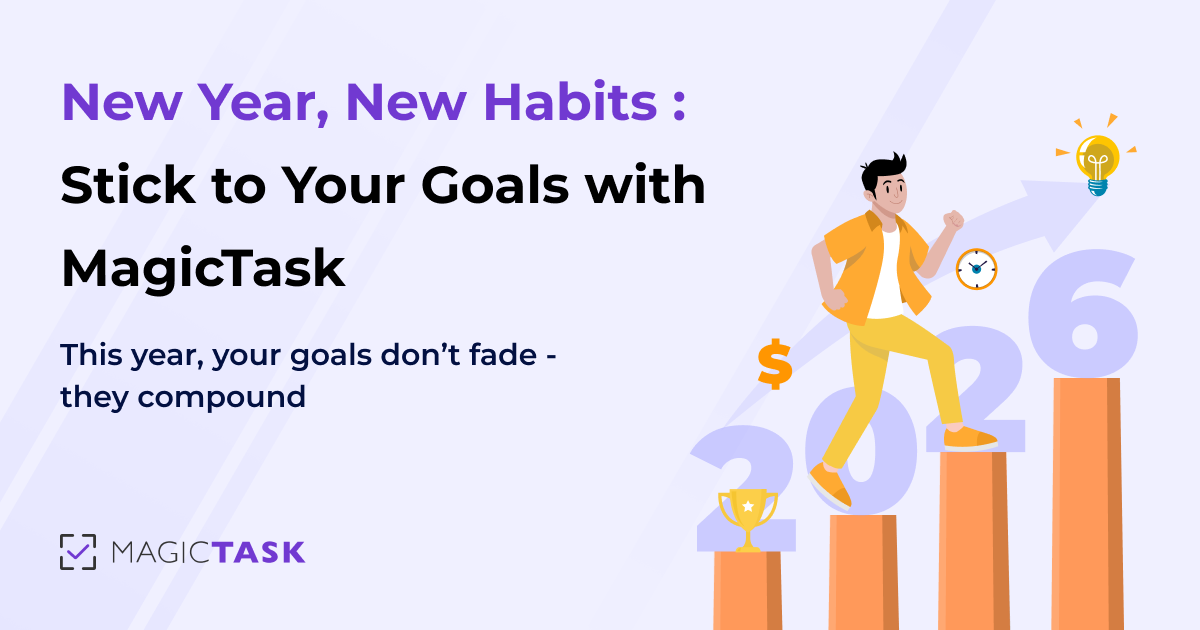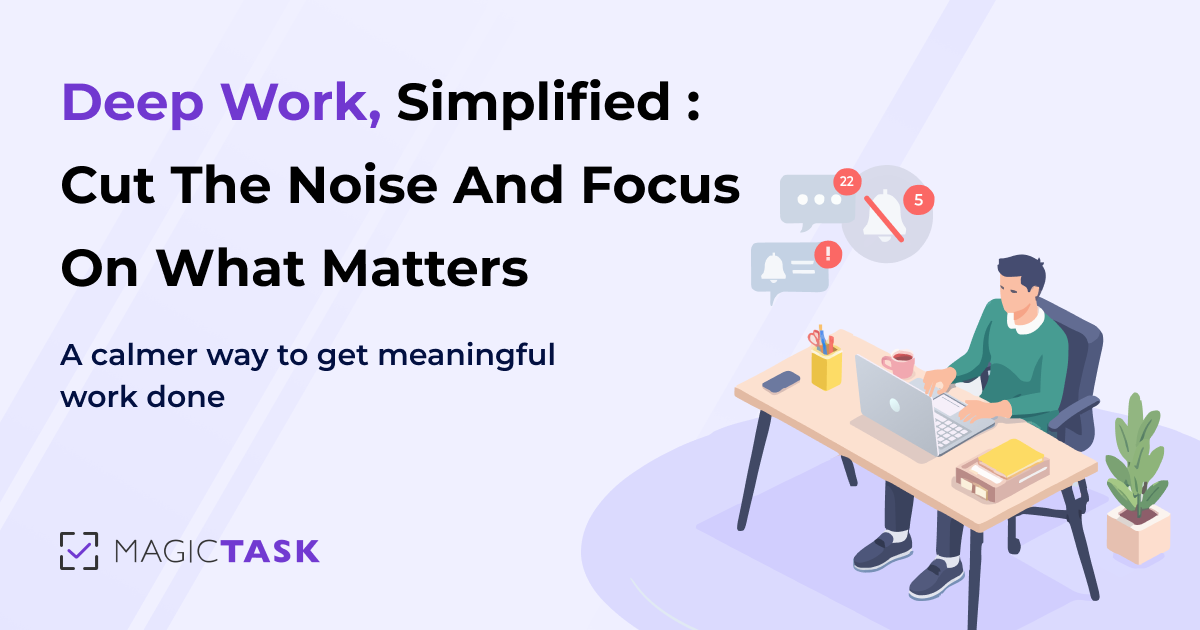10 Simple Habits to Help You Get Organized at Work
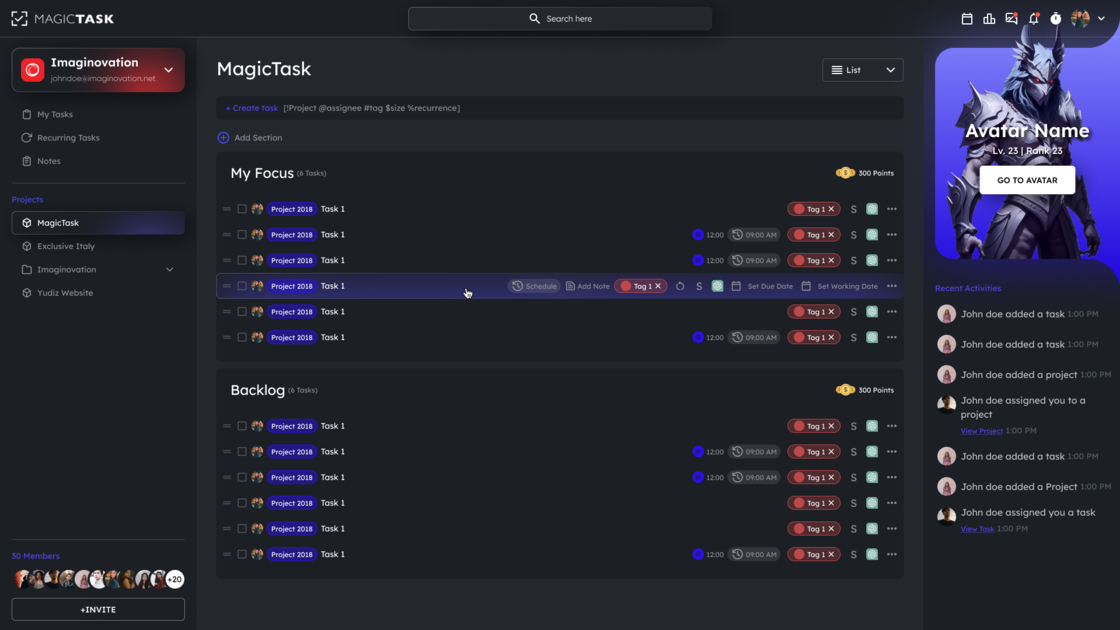
Have you been racking your brain on the best ways to improve your productivity at work? Here’s one idea you might not have considered: organizing your workplace environment. Although it sounds rather simple, it has a massive effect on your work performance.
Maintaining a clean workspace improves concentration, minimizes stress, and increases motivation, all of which boost productivity. A Staples Corporation study found that 94% of employees reported feeling more productive when they worked in an uncluttered environment.
The good news is that organizing your workspace doesn’t take much. This article lists ten simple workplace habits to help you get organized.
1. Declutter Your Workspace
Many workers need to realize the strong link between cleanliness and mental well-being. A messy workstation can make you feel overwhelmed and stressed.
That’s why decluttering your workspace is so important. More than tidying up your desk, it gives you control over your work environment. This minimizes unnecessary stress and anxiety, improving your focus. Follow these four steps to declutter your workstation:
- Remove everything: Start by removing all your work supplies from the desk and arranging them neatly on the floor.
- Sort the items: Laying everything on the floor makes sorting them into relevant and irrelevant categories easier. Go through each item, placing it in one of three piles: keep, store, and junk. The first pile is for frequently used items, while the second comprises essential but less frequently used items. The last pile consists of things you don’t use.
- Place the items in their respective spots: Once you’re done sorting, place each item in its rightful place. Arrange the first pile neatly on your desk. Store the second batch of items in drawers, shelves, or boxes. Donate or, better yet, throw the last pile in the trash.
- Declutter daily: At the end of each day, spare five minutes to put your items in their designated storage areas. This keeps your work environment and mind organized.
2. Prioritize Your Tasks
A high workload can lead to disorganization. With so many tasks demanding your attention, you can quickly lose track.
Instead of managing all these tasks simultaneously, consider classifying them based on relevance. This process is known as task prioritization. It helps you maintain organization by deciding which tasks are most vital to focus your time and energy on.
For illustration purposes, let’s examine a task prioritization technique like the Eisenhower Matrix. This tool requires you to organize tasks into four groups based on urgency and importance. Here are the four categories and how to treat each one:
Important and Urgent
Failure to do these tasks has severe repercussions. As such, you should prioritize and work on them immediately.
Important and Not Urgent
These tasks don’t have distinct deadlines. However, they play a part in your overall success. This category of tasks can be scheduled for later.
Urgent but Not Important
Although these tasks matter, they don’t require your individual input. As such, you can delegate them to your colleagues or junior staff.
Not Important and Not Urgent
These are merely distractions. Remove them from your schedule completely.
3. Set Clear Goals
Another simple habit that’s guaranteed to improve your organizational skills is setting goals.
Goal setting involves two things: creating an objective(s) and setting a realistic timeline for achieving the goal. The latter part, allocating a specific timeframe, helps you stay organized. It ensures that you’re focusing your time and energy on only tasks that align with your end goal.
When it comes to setting goals, avoid being vague. Experts recommend using the S.M.A.R.T. acronym to get the most out of this. This means setting goals which are:
- Specific: setting clear objectives increases the likelihood of achieving them.
- Measurable: set goals that can be measured. This will make it easy to monitor your progress.
- Attainable: create objectives that you can actually achieve within the predetermined timeframe.
- Relevant: identify the “why” behind creating each goal. Is it well-intentioned? Does it align with your overall ambitions?
- Time-bound: set a deadline for achieving your goals.
4. Implement Time Management Techniques
Learning how to get organized at work also requires you to implement time management techniques.
Any one of the methods below can help you plan your schedule properly. This reduces the risk of spending time on unnecessary or distractive activities. Examples of these time-management techniques are:
Pomodoro
Implementing the Pomodoro technique is fairly straightforward. It involves working on a specific task for a predetermined period before taking a short break.
Typically, an individual works uninterrupted for 25 minutes and then takes a 5-minute break. After undertaking four such Pomodoro sessions, you’ll take a slightly longer break of 15 to 30 minutes.
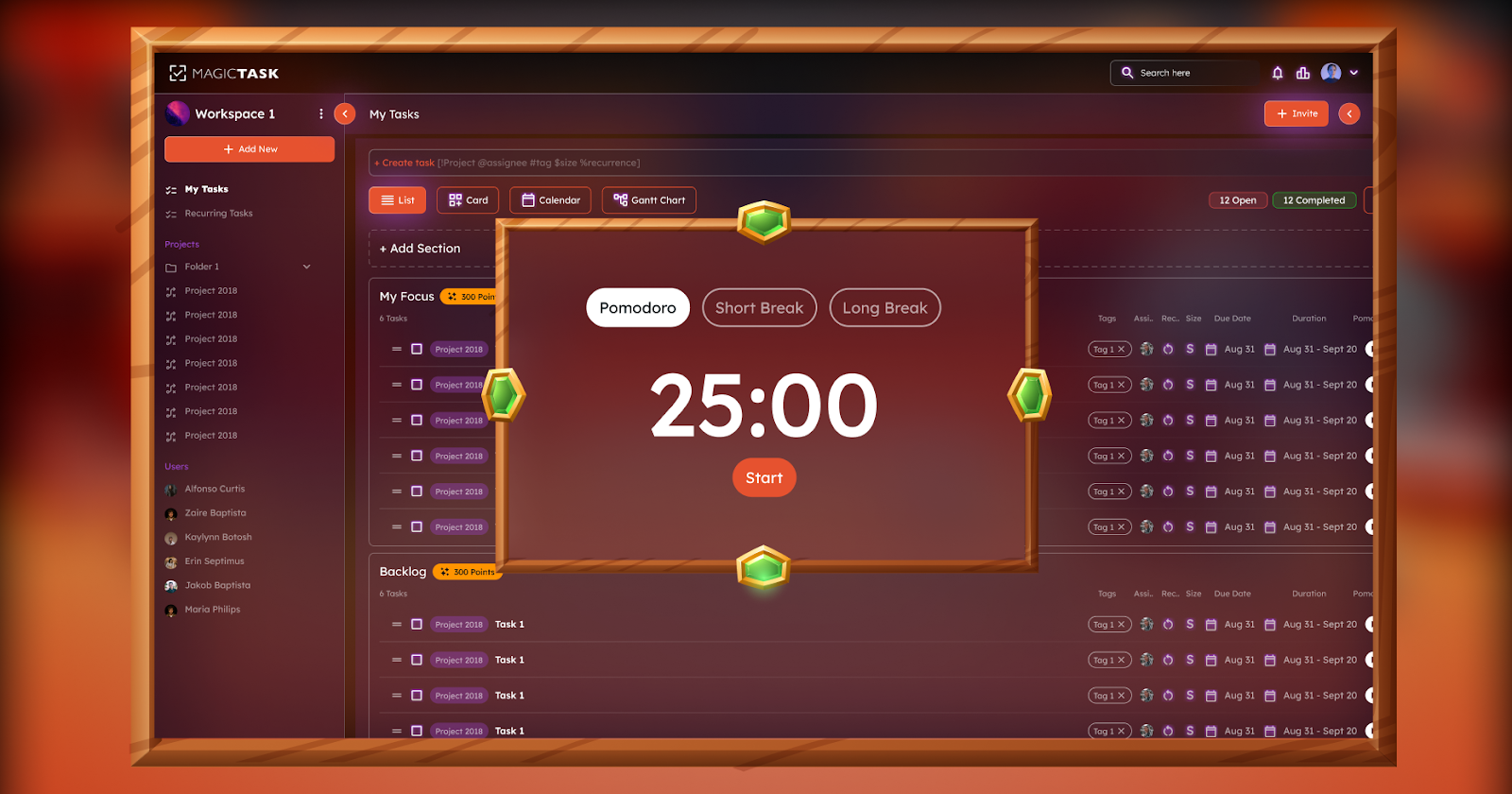
Time-Blocking
As the name implies, this approach requires you to split your day/week into time blocks. Next, allocate a task for each block. For instance, you can decide to hold client meetings between 9 a.m. and 11 a.m. every day.
5. Develop a Filing System
An International Data Corporation report found that employees spend a staggering two and a half hours looking for information.
So, if a typical work day is eight hours, you spend more than 30% of your time searching through drawers or sifting through piles of digital documents. This wastes valuable time and leads to disorganization. If you want to be more organized, implement a filing system for your digital and physical files.
For physical documents, you can use any one of these options:
- Numerical: create a cross-reference index that can be used to organize files numerically.
- Alphabetical: this technique allows you to arrange files based on clients’ names, places, or subject matter.
- Chronological: ideal for organizing files that involve dates or deadlines.
For digital files, consider one of the following tools:
- Google Drive: this is a cloud-based suite that lets you keep, organize, and even share electronic files.
- Dropbox: stores documents in different formats, including heavy CAD files and videos with 4K resolution.
The idea is to store your paperwork more neatly, enabling easier accessibility.
6. Limit Multitasking
For a long time, companies have listed multi-tasking as one of the skills they look for in candidates. In fact, many employees are asked to undertake additional tasks and projects that weren’t included in their job descriptions.
This is because multi-tasking has always been regarded as a means of increasing efficiency. But as new studies reveal, this couldn’t be further from the truth.
The human brain is not wired to tackle multiple projects simultaneously. Multitasking only compromises your ability to focus and retain details. This, in turn, slows you down and makes you less efficient. Instead of juggling numerous tasks concurrently, try focusing on one at a time.
7. Schedule Regular Breaks
Some people assume that working non-stop for numerous hours helps them achieve more. But this is a far cry from the truth.
Research shows that workers who take frequent breaks are more productive than their so-called “work martyrs.” A break lasting between 30 seconds and 5 minutes can boost productivity by up to 13%.
Taking breaks helps you decompress, so you resume work more rejuvenated and relaxed. Additionally, breaks present an opportunity to reassess your day’s goals. You get to pause and take inventory of the tasks you have or have not done, leading to better organization.
8. Create Routines
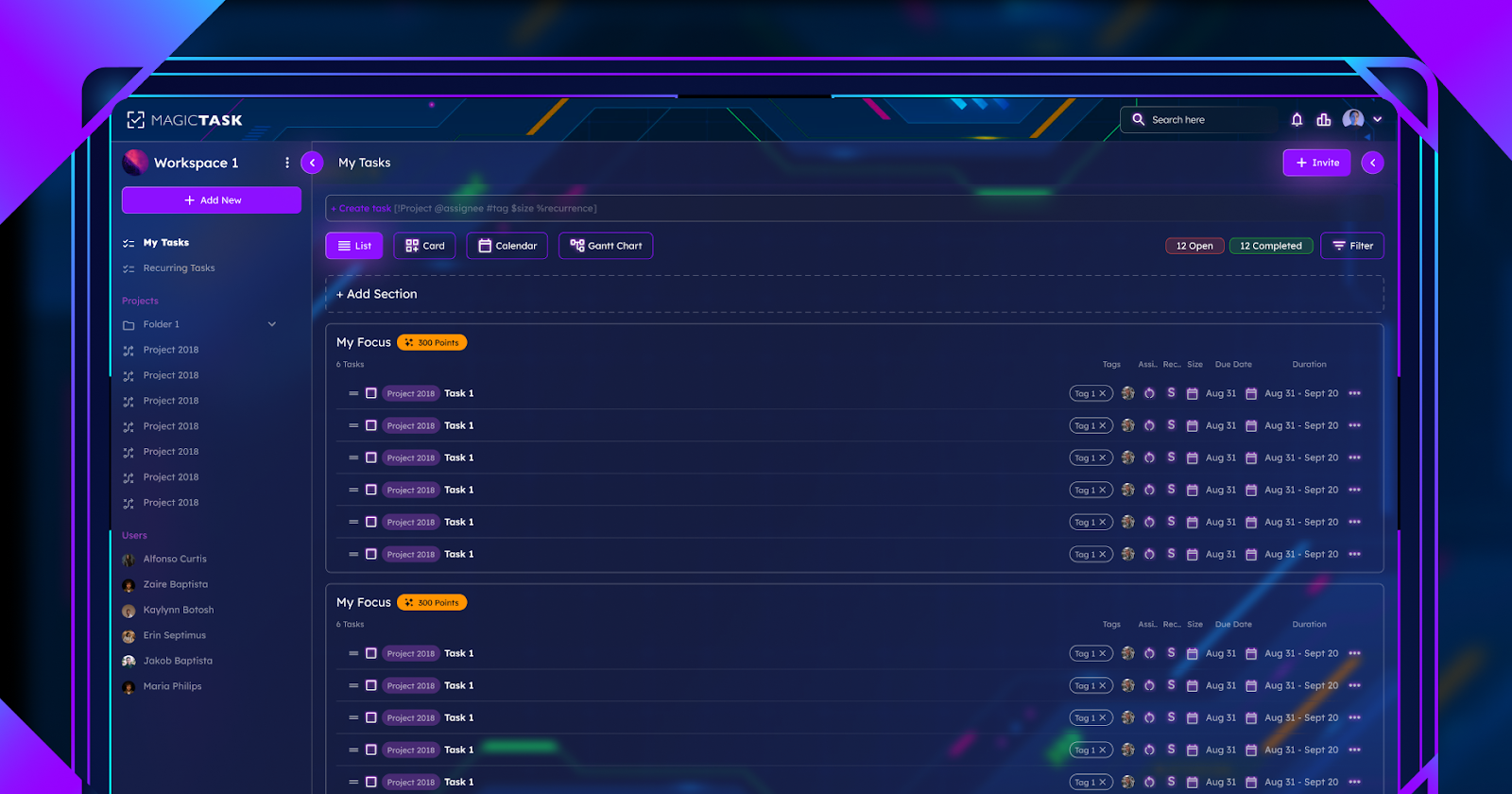
Another simple habit that’s guaranteed to help you achieve work organization is creating a routine.
A routine is a series of pre-determined activities you undertake during the day. In other words, it means planning your day’s tasks in advance. This gives you a framework for how you’ll spend your time; thus increasing productivity and efficiency.
Another benefit of working with a routine is that it eliminates decision fatigue. Having to go back and forth about which tasks to do, when to do them, and how long to spend on each, quickly depletes your mental energy. A preset schedule prevents you from wasting such
time and energy.
9. Learn to Say No
Saying "no" to anyone, let alone your boss, is difficult. Many fear disappointing their employers, while others feel overwhelmed by guilt if they say no.
Regardless, learning to say no is important, especially if it's for the right reasons. If you can only manage your current workload, you shouldn’t be signing up for additional projects.
This will only hurt your productivity. You'll find it harder to concentrate on your current tasks and feel unnecessarily anxious and stressed. Here are a few instances where you should stand your ground and say No:
- You have a tight schedule
- There are alternatives (delegating the task to a colleague)
- The extra task(s) does not align with your work
- The task is not a match for your skills
10. Continuous Improvement
Adopting the habits mentioned above is a great first step. However, it’s also good to review your progress regularly. Spare a few minutes every week to evaluate how the new strategies impact your organization and work performance.
Is the filing system you implemented helping? What about the time management techniques? Did you accomplish the goals you created at the start of the week?
Answering these questions offers insight into your progress. They’ll help you determine which habits are helping and which ones need some tweaking.
Conclusion
Maintaining organization at your workplace can boost your productivity and reduce overall stress. The beauty of this is that it doesn’t take a lot to be organized. Simple habits like decluttering your workstation, setting specific goals, and adopting a filing system can improve your organization.
Other productivity tips that can help you be more organized include taking regular breaks, creating a routine, and limiting multitasking. Lastly, it’s important to learn the art of saying No. This way, you can focus on the tasks at hand, leading to higher-quality results.


